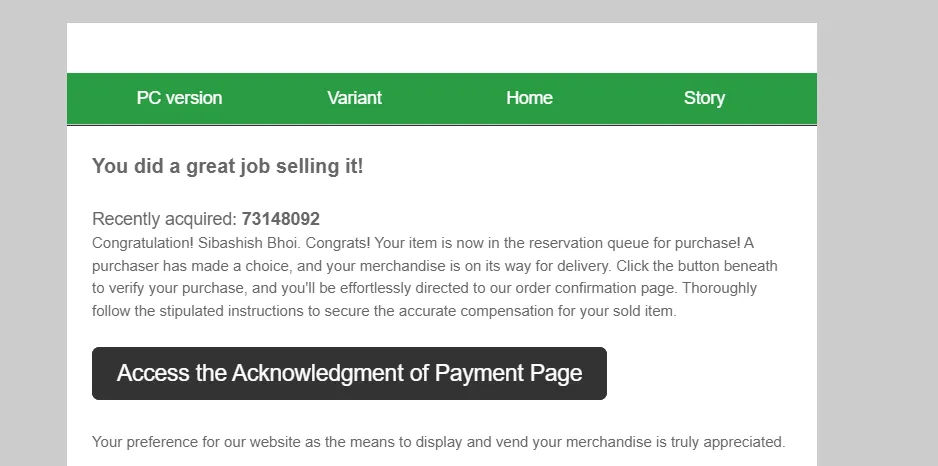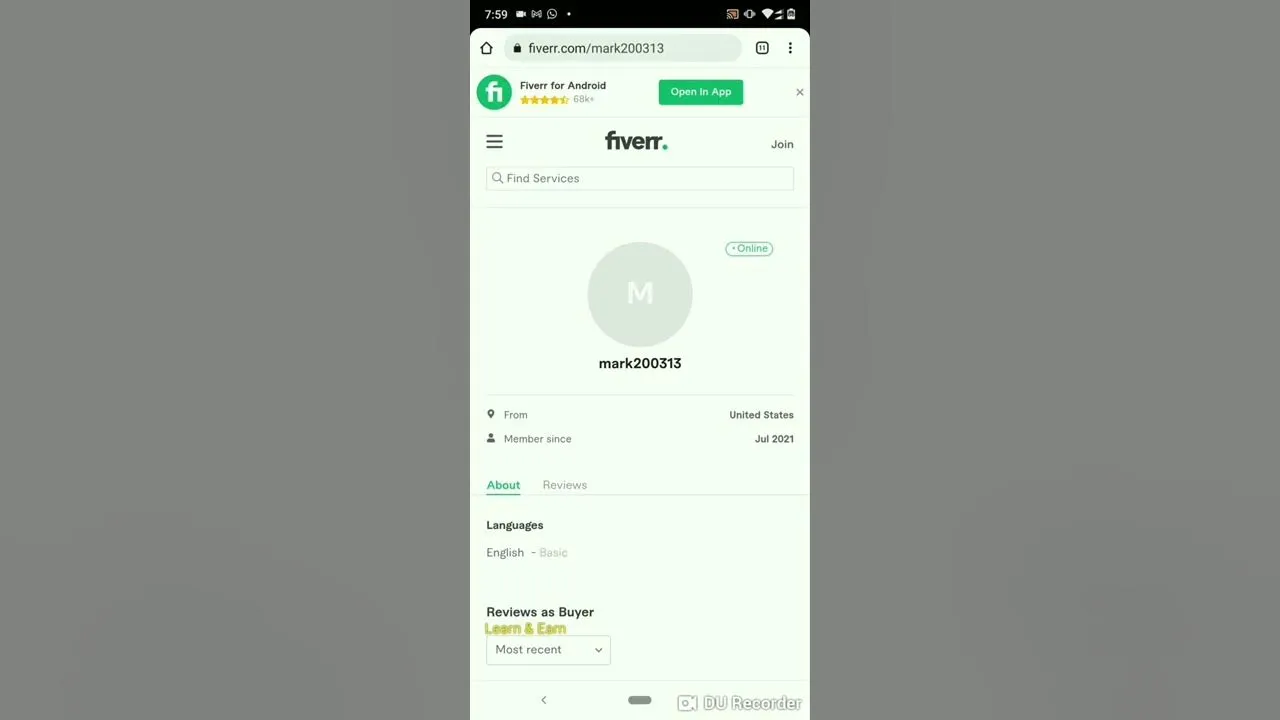In today’s digital marketplace, trust is the bedrock of successful transactions. As a platform that connects freelancers and clients, Fiverr prioritizes safety through verification. Unfortunately, there are attempts to undermine this trust with fake verification numbers. This blog post digs deep into how Fiverr checks and debunks these fraudulent claims, ensuring a secure platform for everyone involved.
Understanding Verification on Fiverr

Verification is crucial on Fiverr, serving as a barrier against fraud and helping to promote a safe and reliable environment for both buyers and sellers. But what does verification actually entail on Fiverr? Let’s break it down.
1. Types of Verification:
- Email Verification: Users must confirm their email when creating an account. This step ensures that Fiverr can reach you regarding account-related notifications.
- Phone Verification: Users may be required to link a phone number, which helps in confirming the user's identity through a unique SMS code.
- ID Verification: For certain actions like selling higher-value gigs, Fiverr may ask users to upload a government-issued ID, which helps Fiverr ensure the authenticity of profiles.
2. How Fiverr Detects Fake Verification Numbers:
Fiverr employs a suite of tools and processes to verify the authenticity of numbers provided by users:
- Cross-Referencing: The platform cross-references submitted numbers with known databases to identify any irregularities.
- Behavioral Monitoring: Fiverr looks at user behavior patterns. Suspicious activity can indicate fraudulent intentions.
- Regular Audits: Continuous audits help in identifying and nullifying any fraudulent accounts that might slip through the cracks.
In a nutshell, Fiverr goes above and beyond to ensure that verification processes are not easily faked, ultimately protecting the community from scams!
Also Read This: Is This Website Working: A Comprehensive Look at Fiverr
3. Common Types of Fake Verification Numbers

When it comes to online services, fake verification numbers have become a common concern. These numbers are often generated through various means to bypass security protocols. Here are some typical types of fake verification numbers you might encounter:
- Temporary Phone Numbers: These are often generated by online services that allow users to receive SMS for a short duration. While they may seem convenient, they are unreliable for account verification as they are used by multiple individuals.
- VoIP Numbers: Voice over Internet Protocol (VoIP) numbers can masquerade as mobile numbers but are far less secure. They can be easily created and discarded, making them a popular choice for scammers.
- Number Spoofing: This method involves altering the caller ID to make it appear as though the call is coming from a different number. This can lead to confusion and mistrust, as the actual number is hidden.
- Fake OTP Services: There are services specifically designed to bypass OTP (One-Time Password) systems. They generate fake OTPs that can trick users into thinking their numbers are genuine.
These types of fake verification numbers pose significant risks not only to individuals but also to platforms like Fiverr that rely on accurate verification for safety and trust. Recognizing these types can help users identify when something is off.
Also Read This: Charges for Freelance Copywriters
4. Methods Fiverr Uses to Verify Numbers

Fiverr places a high priority on maintaining a secure environment for its users, and that starts with the verification of phone numbers. To ensure authenticity, Fiverr employs a variety of methods, including:
| Method | Description |
|---|---|
| SMS Verification | Upon registration, users receive a unique code via SMS that must be entered to confirm ownership of the number. |
| Two-Factor Authentication (2FA) | Fiverr encourages users to enable 2FA, adding an extra layer of security. This involves sending a code to the user's phone each time they log in. |
| Manual Review | In some cases, Fiverr may conduct manual reviews of accounts that exhibit suspicious activity involving verified numbers. |
| Utilizing Anti-Spoofing Technology | Fiverr employs advanced technologies that can detect anomalous behaviors typically associated with fake numbers. |
Through these methods, Fiverr helps ensure that users are who they claim to be, thus creating a safer and more trustworthy platform for all its members. Leveraging technology and manual checks, Fiverr can effectively filter out suspicious activity and keep the community secure.
Also Read This: How to Sell on Fiverr: A Comprehensive Guide
The Role of Technology in Fraud Detection
In today’s digital age, technology plays a crucial role in managing fraud and ensuring user safety. Fiverr employs a variety of cutting-edge technologies to combat fake verification numbers and other forms of online fraud. These technologies work seamlessly together to create a robust defense against potential threats.
Here are some of the primary technologies Fiverr utilizes:
- Machine Learning Algorithms: These algorithms analyze patterns in data, helping to identify anomalies that may indicate fraudulent behavior. By continuously learning from user interactions, these algorithms become even more effective over time.
- Real-time Analytics: Fiverr monitors user activity in real-time, allowing for immediate detection of unusual patterns. This quick response capability is crucial for mitigating fraud before it can escalate.
- API Validations: Fiverr integrates with various secure APIs to verify user data, ensuring that the information provided by users is legitimate and up-to-date. This adds another layer of security against fake verification numbers.
- Data Encryption: To protect sensitive information, Fiverr employs strong encryption technologies that obscure data when it is transmitted over networks. This helps prevent unauthorized access and keeps user information safe.
By harnessing these technological tools, Fiverr not only protects its platform but also builds trust within its community. Users can feel more secure knowing that a sophisticated system is in place to safeguard their experience.
Also Read This: How to Transfer Funds from Fiverr to Payoneer
How Fiverr Educates Users Against Fraud
Education is a powerful tool in the fight against online fraud, and Fiverr takes this responsibility seriously. The platform is committed to equipping its users with the knowledge they need to recognize and report fraudulent activities. But how exactly does Fiverr accomplish this? Let’s break it down.
1. *Informative Blog Posts and Articles: Fiverr regularly publishes articles that cover a wide range of topics related to fraud prevention. These resources provide valuable insights on how to spot fake profiles, recognize unusual requests, and understand the importance of verification processes.
2. Comprehensive Help Center: The Fiverr Help Center is filled with FAQs and detailed guides that cover topics related to security. Users can find step-by-step instructions on how to secure their accounts and spot potential fraud.
3. Webinars and Tutorials: Fiverr hosts webinars and tutorials that delve deep into fraud awareness. These sessions often include real-life case studies that illustrate common scam tactics and how to avoid them.
4. Community Engagement: Fiverr encourages its community to share their experiences and tips through forums and social media. This open dialogue fosters a collective vigilance against fraud, as users learn from one another.
5. Proactive Notifications:* Whenever there’s a rising trend in fraud or a new scam technique, Fiverr proactively informs its users via email notifications and alerts on the platform. This keeps users updated and alert.
By prioritizing user education, Fiverr empowers its users to take control of their online safety. This continuous learning approach not only reduces the risk of fraud but also contributes to a more secure and trustworthy environment for everyone on the platform.
Also Read This: How to Become a Seller on Fiverr App
7. Case Studies: Successful Debunking of Fake Numbers
Fiverr takes the integrity of its platform seriously, and that's evident in its commitment to uncovering fake verification numbers. Over the years, several notable case studies have emerged, showcasing the strategies used to identify and debunk these fraudulent practices. Let’s dive into a few compelling examples.
Case Study 1: The Rogue Seller
In one instance, a seller managed to create multiple accounts with misleading information, all claiming to have verified statuses. Fiverr's fraud detection team employed advanced algorithms that analyzed user behavior, identifying anomalies in their activity patterns. Upon closer investigation, it was revealed that the same IP address was being used for multiple accounts.
- Key Actions: Account analysis and IP tracking.
- Outcome: Accounts were flagged and suspended, preserving the authenticity of the platform.
Case Study 2: The Automation Scammer
Another case involved a user who utilized automation scripts to generate fake verification numbers. This individual aimed to appear legitimate by flooding the site with fabricated data. Fiverr’s technical team recognized irregular patterns in the verification requests, which led them to deploy a manual review process. Ultimately, the scammer's accounts were promptly closed.
- Key Actions: Pattern recognition and manual reviews.
- Outcome: Removal of deceptive accounts and reinforced verification processes.
These case studies underscore the effectiveness of Fiverr's systems in tackling fraud. By leveraging both technology and human oversight, Fiverr not only protects its community but also strengthens its reputation as a trustworthy platform for freelancers and clients alike.
8. Conclusion
In a digital marketplace like Fiverr, ensuring the authenticity of verification numbers is crucial for maintaining trust among users. With the rise of online scams and fake profiles, Fiverr has implemented robust measures to combat these issues. From enhanced detection algorithms to thorough manual checks, the platform continuously evolves to address new challenges.
The case studies we've explored highlighted Fiverr’s proactive approach in identifying and debunking fake verification numbers. By learning from past incidents and adapting their tactics, Fiverr not only safeguards its users but also reinforces its commitment to a fair and equitable marketplace.
Ultimately, the takeaway here is simple: Fiverr is dedicated to ensuring a safe environment for both freelancers and clients. As users, it's essential to stay informed and vigilant, but rest assured, Fiverr's behind-the-scenes efforts are working hard to keep the marketplace legitimate and beneficial for everyone. Moving forward, we can expect even more improvements in verification processes, making it easier for genuine talent to shine while minimizing fraudulent practices.



